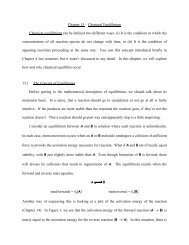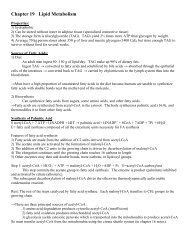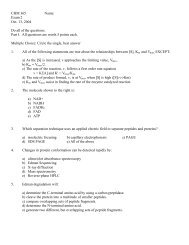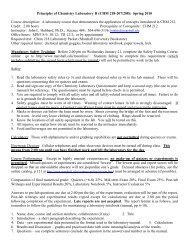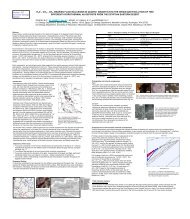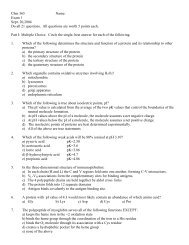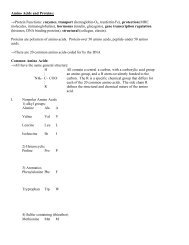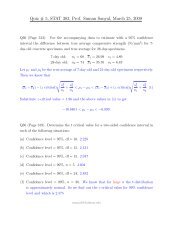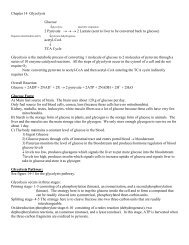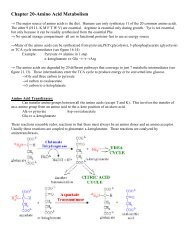LAB 1: INTRODUCTION TO MOTION
LAB 1: INTRODUCTION TO MOTION
LAB 1: INTRODUCTION TO MOTION
Create successful ePaper yourself
Turn your PDF publications into a flip-book with our unique Google optimized e-Paper software.
Lab 1: Uniform Motion<br />
Results from position-time graph:<br />
Use the Smart Cursor button, , to read the position and time coordinates on the graph for<br />
two typical points while you were moving. You will have to drag the cursor to the point that<br />
you want to measure. For the better accuracy, use two points on the line that are far apart but<br />
still typical of the motion. These need not be the same points used in measuring the velocity<br />
directly with a stopwatch, and t 1 ≠ 0s since t =0 when you start recording data with the motion<br />
sensor. Don’t forget to put in units!<br />
Measurement<br />
Position 1 x 1 =<br />
Position 2 x 2 =<br />
Data and results<br />
Displacement x =(x 2 - x i ) =<br />
Time 1 t 1 =<br />
Time 2 t 2 =<br />
Time interval t = (t 2 - t i ) =<br />
Velocity x / t =<br />
Question 2-6: Was your displacement positive or negative? Why? Was the velocity positive<br />
or negative? Is this what you expected from the direction of your motion? Why?<br />
Question 2-7: Does the velocity you calculated from the position-time graph agree exactly<br />
with the velocity you calculated directly using the stopwatch? Do you expect them to agree<br />
exactly? Why? How would you account for any differences?<br />
Page 1- 11



